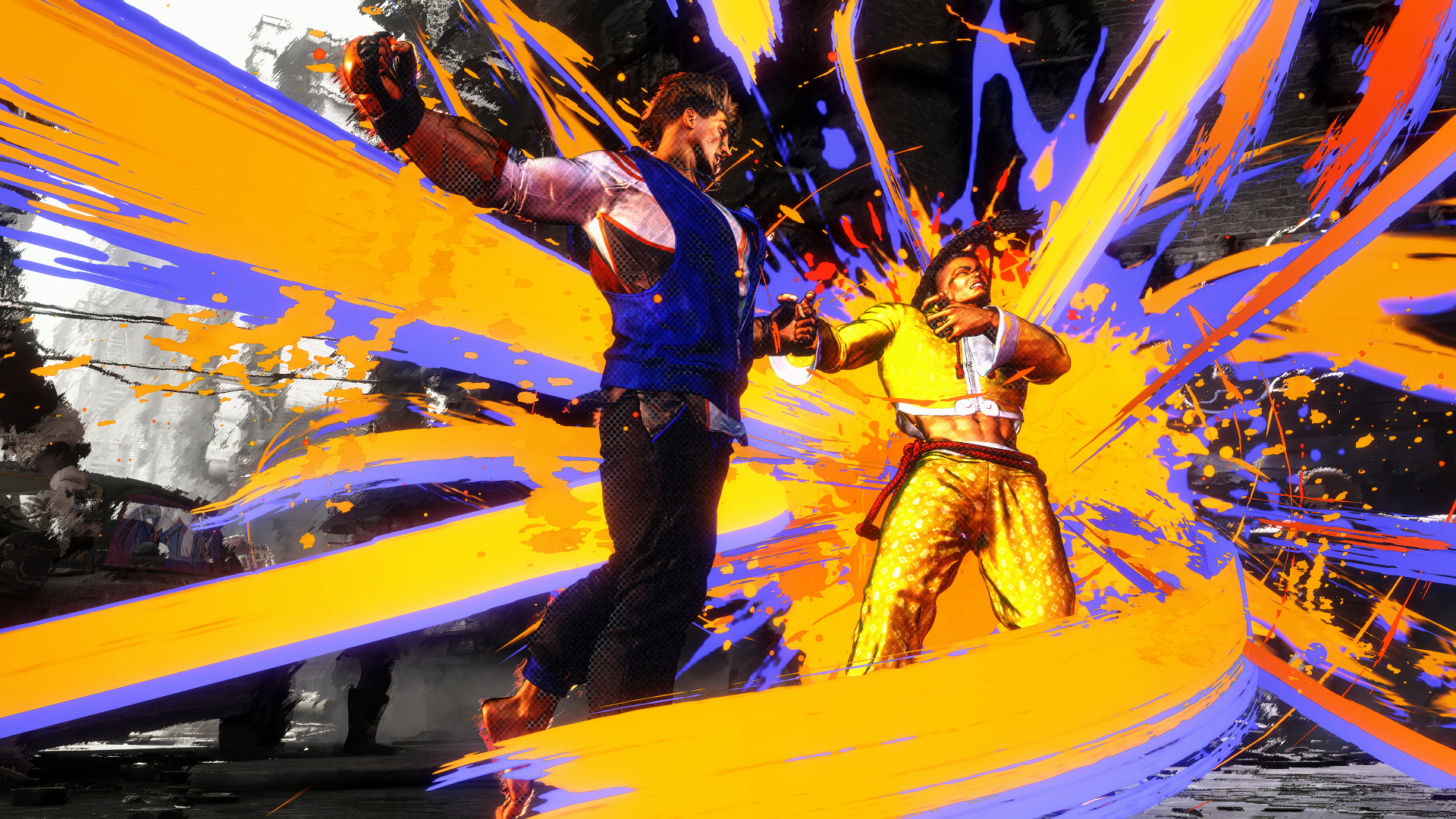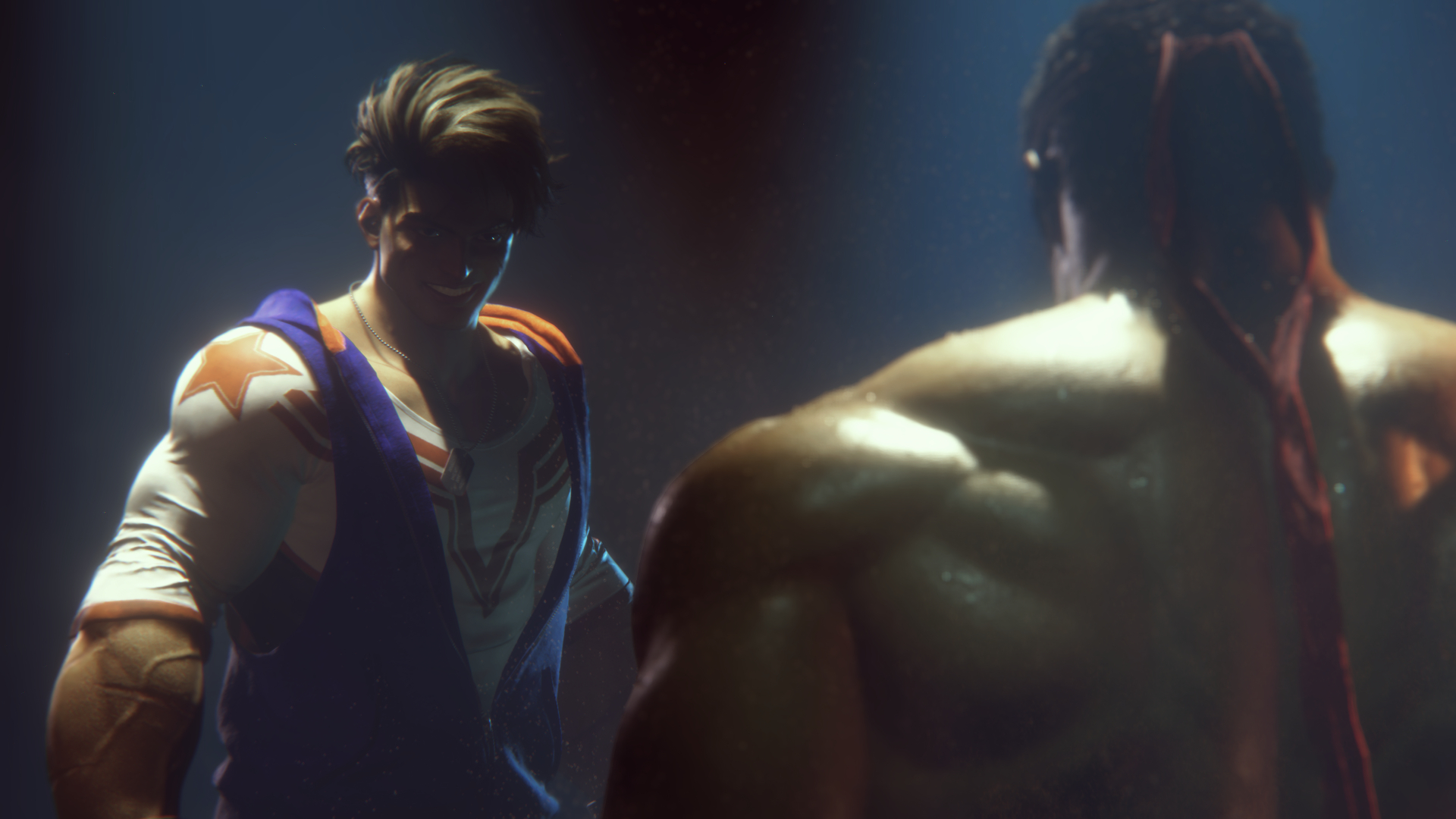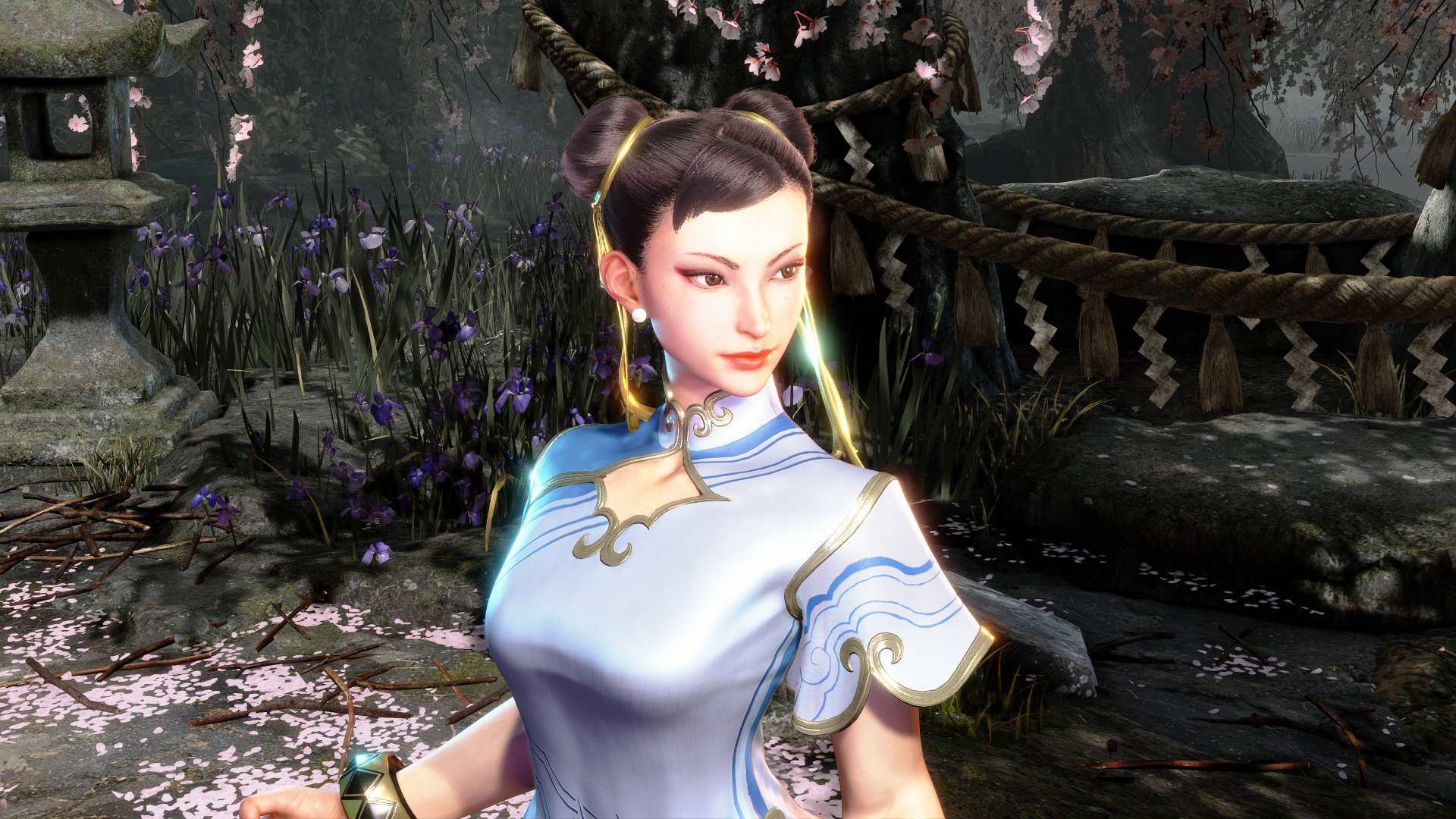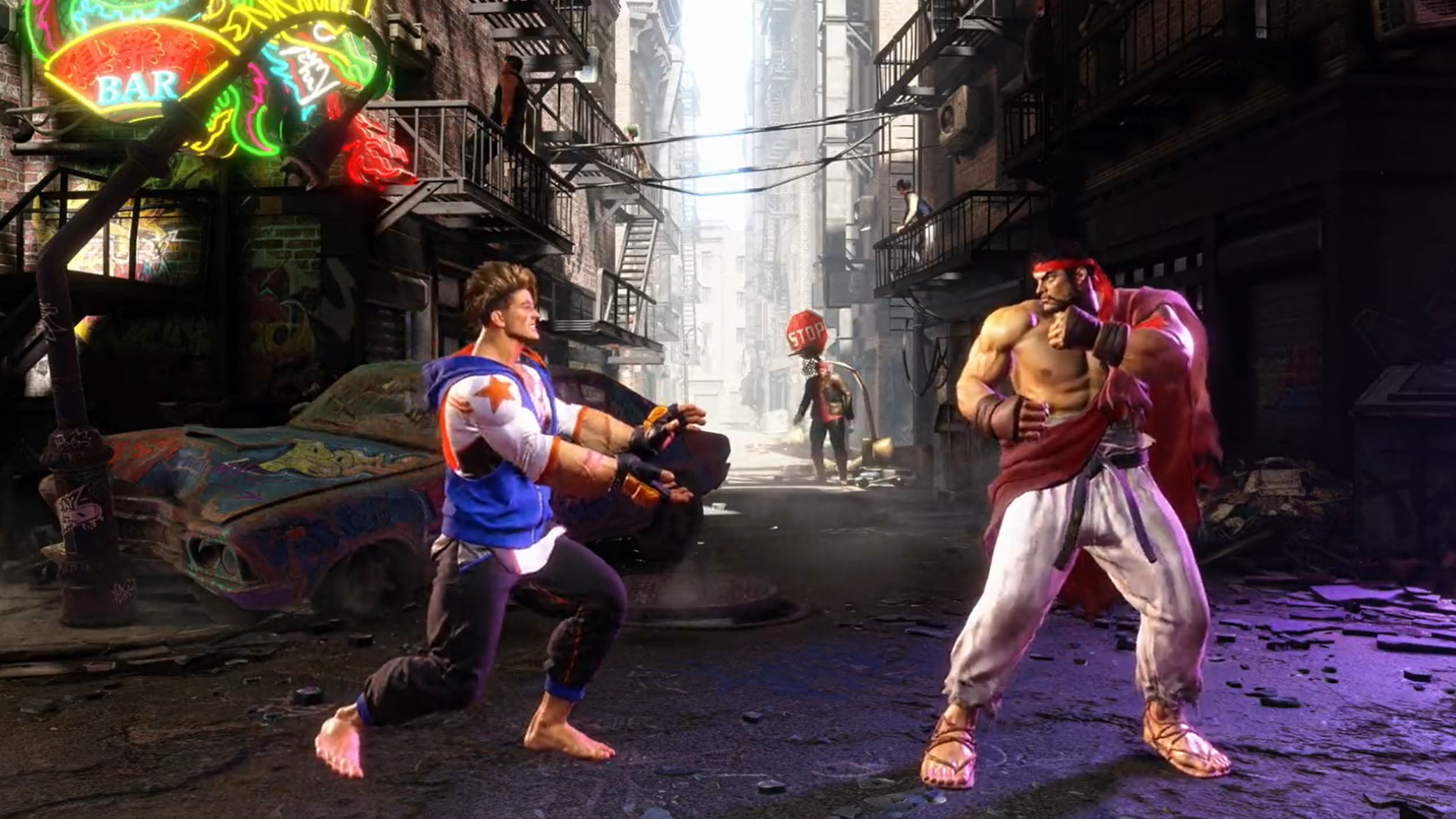Street Fighter 6's biggest changes explained by game director Takayuki Nakayama
"What would happen if we made a Street Fighter 2 character in high graphical fidelity?"

Street Fighter 6 is ready to come out swinging on PS5, Xbox Series X, and PC in 2023, mashing together the iconic series' familiar mechanics with new features to keep it fresh. The new Drive system means you're powered up from the first second of the fight and have more options on how you spend that power. A new "Modern" control scheme allows you to pull off special moves with a simplified combo, meaning new players can still perform devastating attacks. Of course, there are new characters too, like Drunken Boxing and Capoeira expert Jamie, and let's not forget that the whole game was built in the RE Engine for the first time, a piece of tech originally created for Resident Evil 7: Biohazard.
In a sweltering LA, we got a rare chance to sit down with Street Fighter 6 developers, chief producer Kazuhiro Tsuchiya, and game director Takayuki Nakayama, and find out what the big changes coming to the series mean for players, and why now was the right time to launch them.

GamesRadar: What has changed about making a Street Fighter game in 2022, compared with the early days of the series?
Kazuhiro Tsuchiya: From the early days of Street Fighter 2 – we all acknowledge it as the game that's been in the limelight, and something that all gamers were enjoying at the time – and we feel that, right now, there's almost a stereotype or a stigma that fighting games are more geared towards a hardcore audience that has been playing fighting games for a very long time. For us, one of the challenges is obviously to continue catering to that existing audience, but also to try to make Street Fighter 6 into something that even newcomers and people who've never even touched a fighting game can really enjoy. We strongly believe that we can accomplish that with Street Fighter 6.
We're just trying to lower the bar a little bit
Takayuki Nakayama
GR: Was that the thinking behind the new "Modern" control scheme? What was the development process of that like?
Takayuki Nakayama: I don't think that it really dynamically affected the overall development process. If you were to kind of explain the philosophy and mindset behind it, we understand that for a lot of users there are tall hurdles that are difficult to overcome for a new user, that may be a lot easier to execute for a veteran or somebody who's very well versed. We're just trying to lower the bar a little bit so that people who are really trying to kind of engage and enter into their first fighting game, that they can really take the necessary steps that they feel comfortable with in order to really get to that particular level. And I mean, yeah, it is challenging to kind of come up with a system that appropriately caters to that particular audience, and while that's a challenge of its own didn't like significantly affect the overall development process.

And what about the new Drive system? What was the thinking behind that?
Sign up to the GamesRadar+ Newsletter
Weekly digests, tales from the communities you love, and more
Nakayama: So obviously, we changed the system from the V System in Street Fighter 5 to the Drive system in Street Fighter 6. One of the things that I want to note about the system is that there are a lot of different types of actions and moves that can be conducted utilizing just this one system. It really caters to various types of game personalities so that people can really strategize and have fun in their own way. For example, if you are very aggressive you could just use it to to kind of enhance the existing moves and overdrive moves, kind of to rush in and really be offensive, or you know, you could use it to drive impact, which allows you to absorb hits and then counter, I just really thinks that there's a lot of different possibilities just with this one system for people to really play in their own way.
I want someone to see a character and start visualizing in their mind 'oh, I wonder if this person can do these moves?'
Takayuki Nakayama
Street Fighter has a huge esports following, is that something you also have to consider when adding new features?
Nakayama: That is something that we definitely take into consideration in terms of the competitiveness of a character. But more importantly, the character has to be fun – that takes priority over anything. People have to be able to play and feel like 'this is an amazing experience.' And yeah, balancing is also important too, but it doesn't mean it's not fun to play.
Along with these changes, this is the first time you're using the RE Engine, an engine really built for action games. How has that been?
Nakayama: One of the greatest benefits of the RE Engine is that it's ours. [Laughs] If there's a specific need that our game has, then that's something that we actually have the flexibility and freedom to adjust accordingly.

There are always strong reactions when you add a new character to the roster, how do you decide which ones make it? Is it about balance or introducing fresh fighting styles?
Nakayama: Obviously, it's very important for someone when they actually get the game in their hands to when they actually do try out a new character for them to be like, 'oh, wow, we can do all these crazy things.' But like another layer upon that is that, you know, it's also important for even before they touch start playing the game. I want someone to see a character and start visualizing in their mind 'oh, I wonder if this person can do these moves? And do they come from this background?' I think that being able to prepare a design that gets people to really start thinking about the character before they even play them, that in itself is very important.
Finally, we've seen a lot of aesthetic changes to the Street Fighter series over the years, what were the influences behind Street Fighter 6?
Nakayama: It's hard to pinpoint specific inspirations that affected this particular title but, as you can see, we definitely went for a more photorealistic art and character design style for the game. And that's something that the art director of the game and the team talked about it together, then figured out and established this existing art style. One of the concepts that we tried to aim for was, what would happen if we made a Street Fighter 2 character in high graphical fidelity? What would that look like?
Want to learn more about Capcom's 2023 Street Fighter 6? Here's our hands-on with Capcom's fighting game that's fit for a new generation

Rachel Weber is the former US Managing Editor of GamesRadar+ and lives in Brooklyn, New York. She joined GamesRadar+ in 2017, revitalizing the news coverage and building new processes and strategies for the US team.


